SMODE is a real-time, media-server compositing platform offering great creative flexibility. SMODE can be used to orchestrate the visuals for any type of show or installation.
Here are some instructions and examples project for Smode. Smode has a native Augmenta intregration, so no plugin to download !
Looking for using Notch in Smode ?
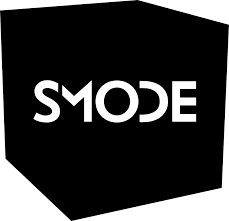 Notch in SMODE with Augmenta
Notch in SMODE with AugmentaQuick start
Get the simulator and use the SMODE preset or OSC V2 with port 12000 (default)
- Start a SMODE project
- Enjoy 🙂
Video tutorial
Written tutorial
Prerequisites:
- Having SMODE installed on your computer
Get the simulator on your computer
Open SMODE.
First, create a new show
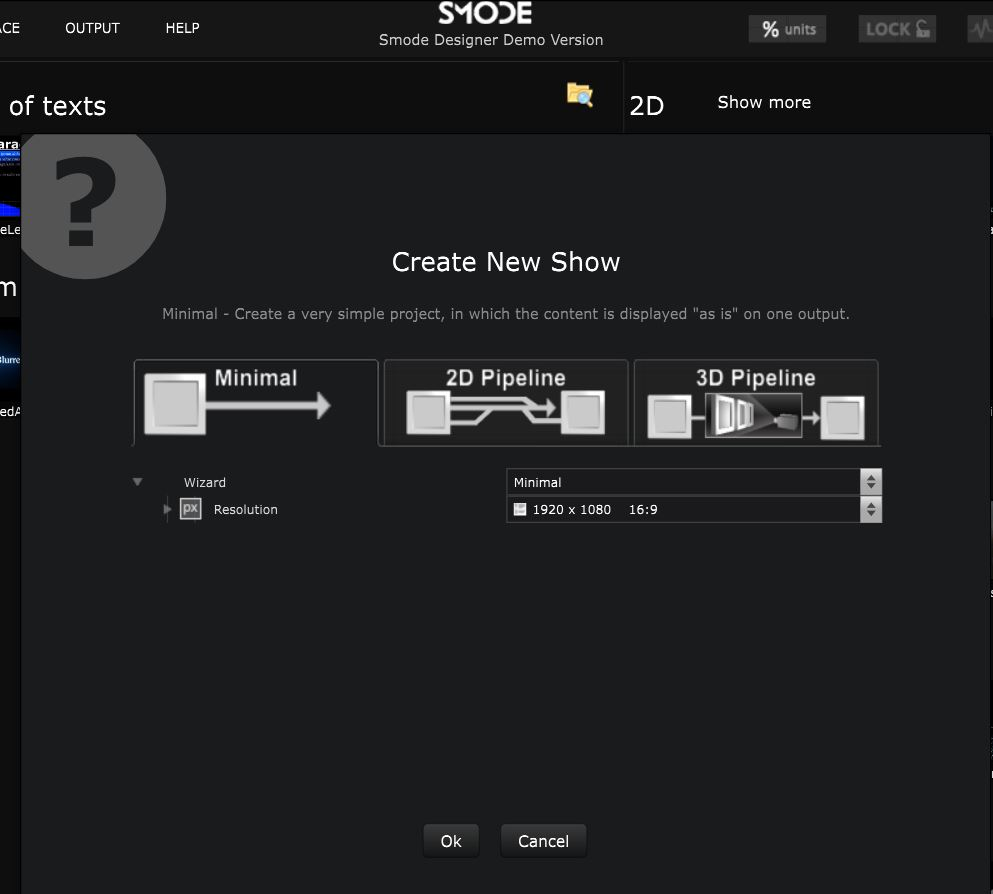
Then, switch to the stage view.
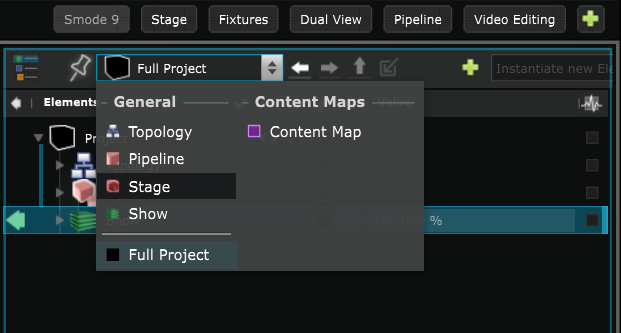
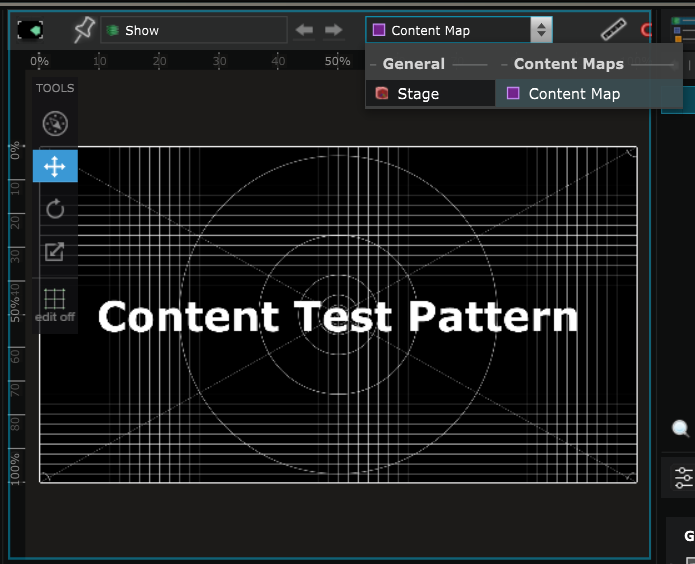
Create a new stage element. Right-click, then Elements > Surface.
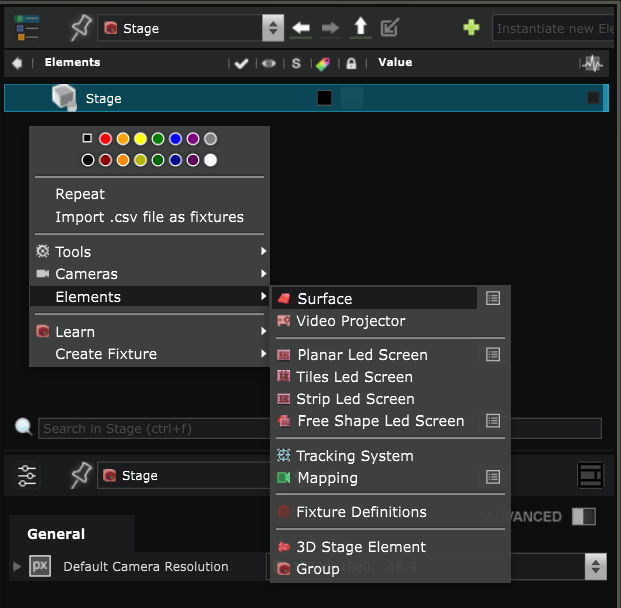
In the parameters, you can modify its size and orientation. Here, to make a floor, we’ve set the size to 12x12m and the orientation to 0 degrees.
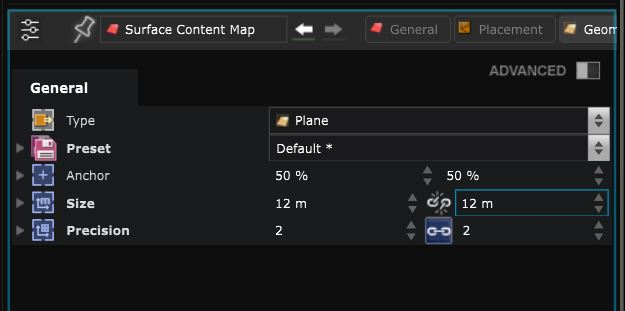
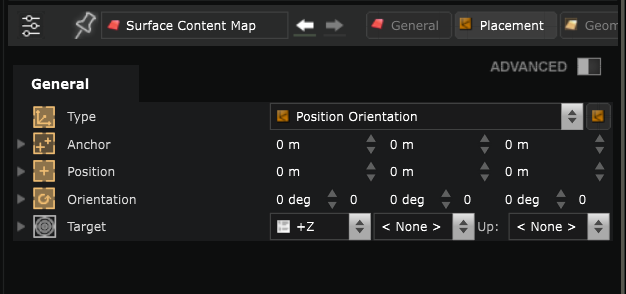
Open Augmenta Fusion. Set the scene size to 12x12m to match the SMODE scene size. Then activate video output. Select Spout, set the scene dimensions and lock the ratio. Match the scene size to that set in SMODE.

Go back to SMODE.
In the Output tab search for Configure Video Outputs (F11). Add a video Input, you should see Augmenta Fusion - Scene.
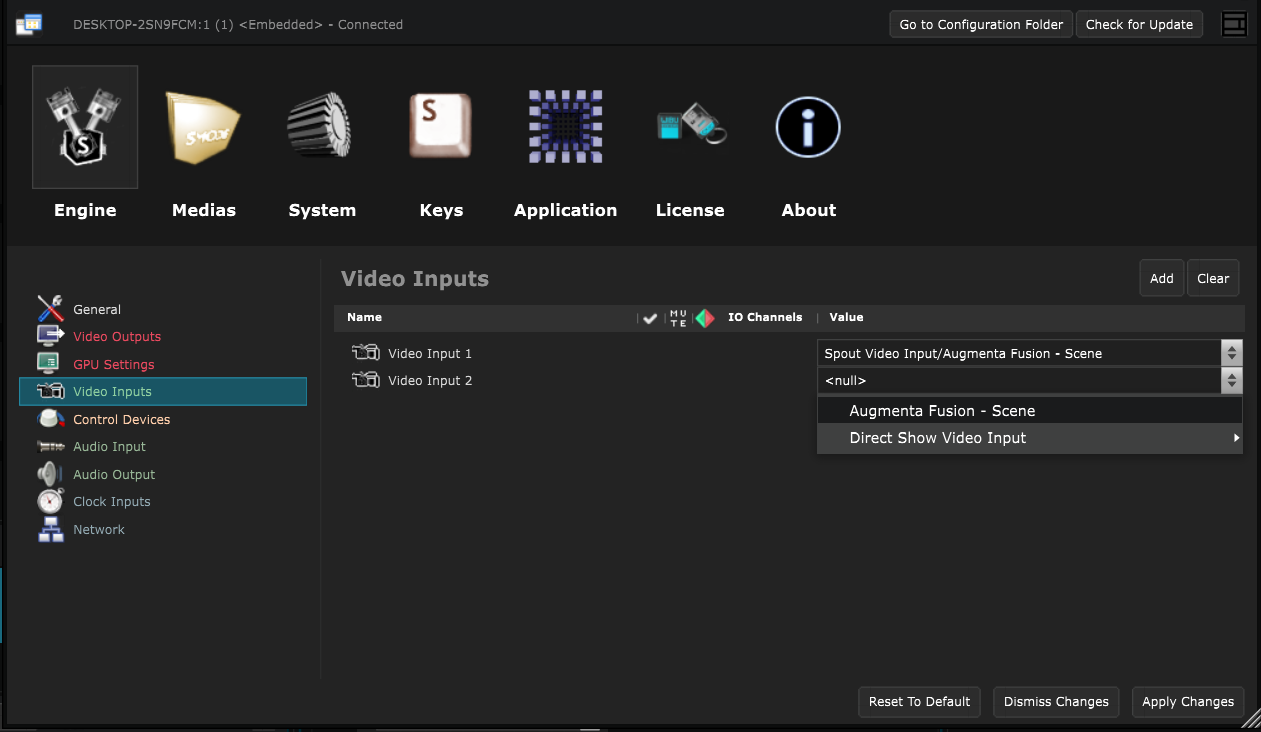
Then open the Show Elements, right-click to add a Video Input : 2D Layers > Video Input.
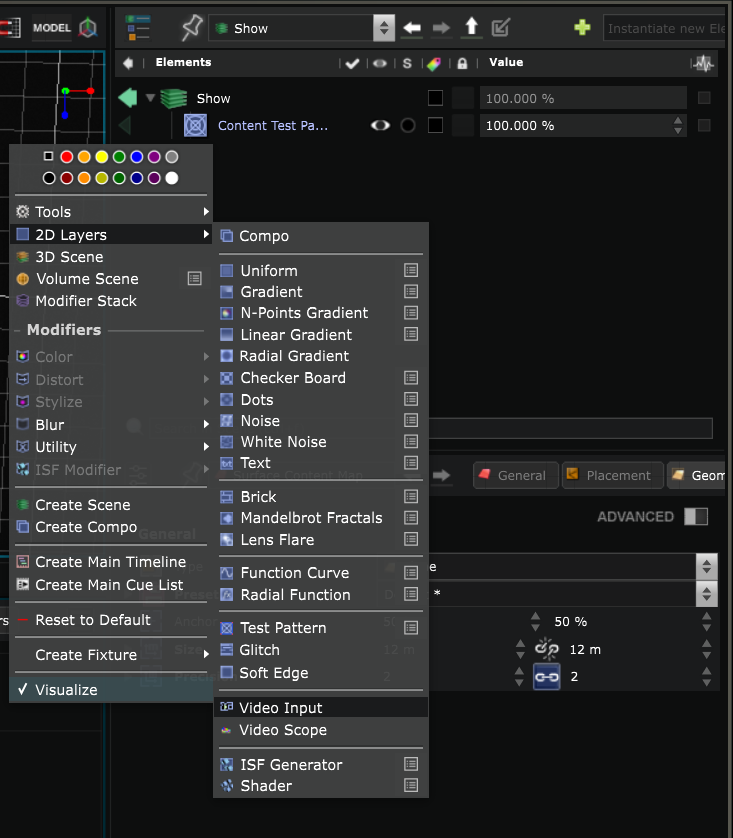
In the parameters, check that the device is well connected to Video Input 1.
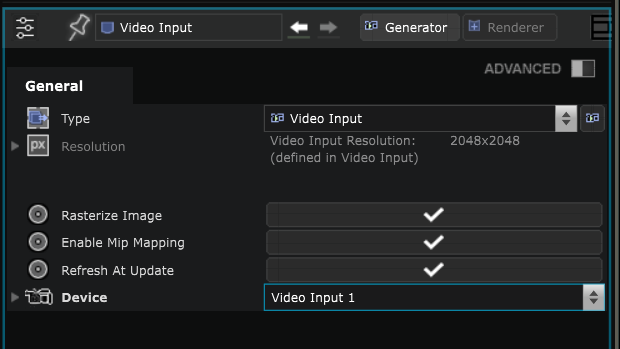
In Fusion, go to the Output window to add an OSC output.
Right-click on the scene to add a generator. By holding down Alt, add points to your scene.
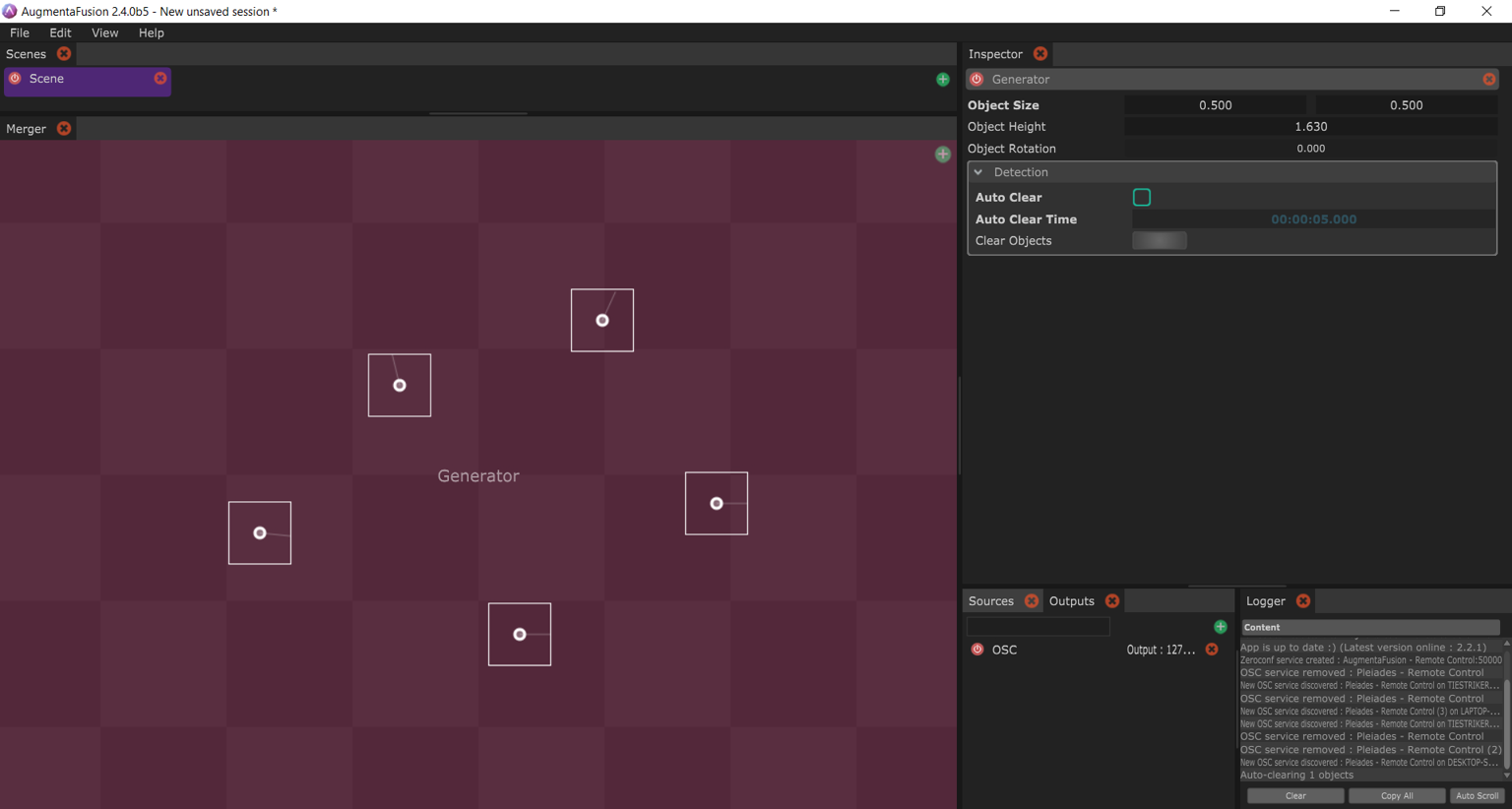
Don’t forget to disable the Auto clear function if you don’t want your points to disappear after 5 seconds.

Now in SMODE you should see your Fusion scene.
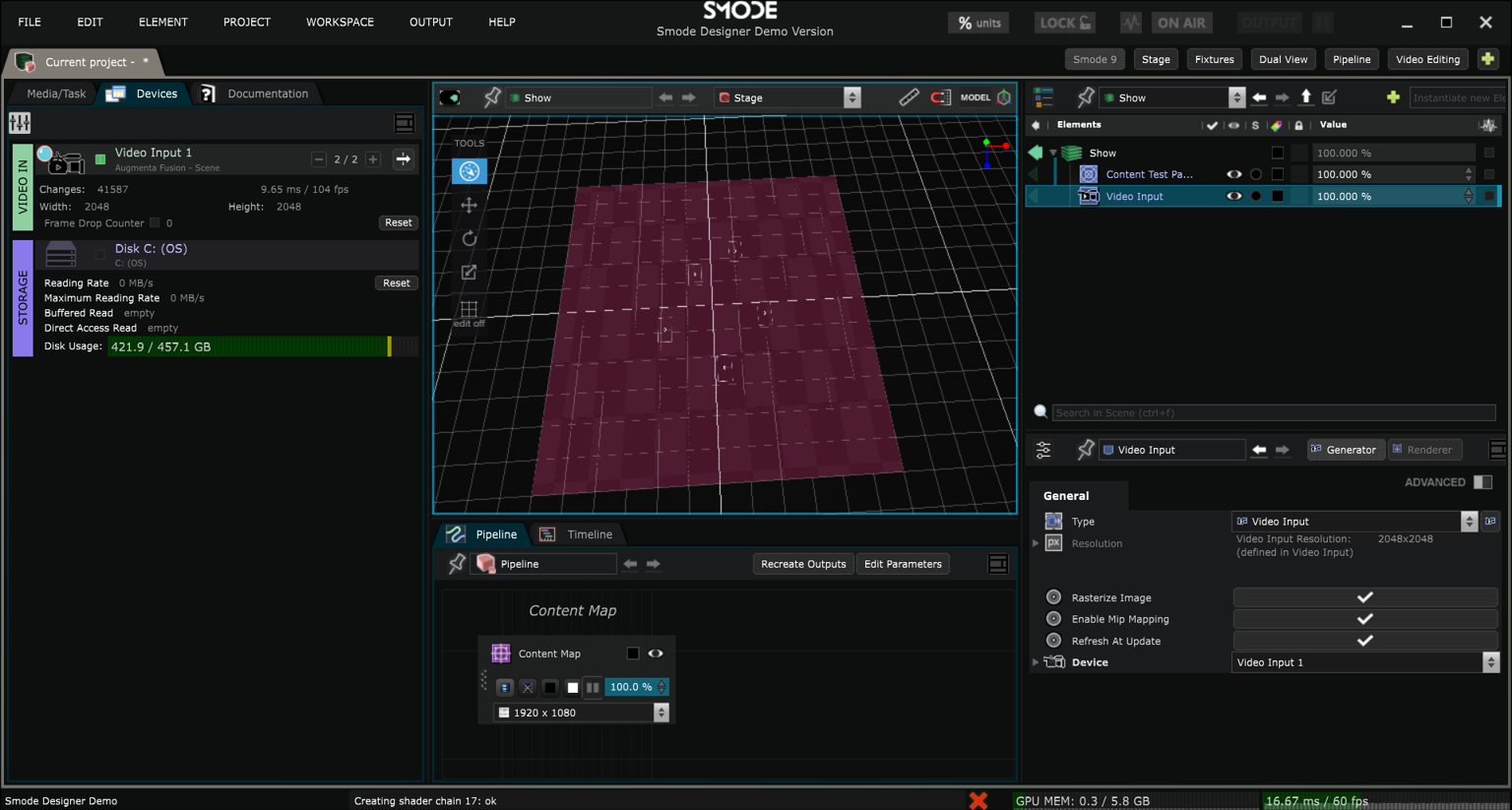
In stage, add a Tracking System. Right-click > Elements > Tracking System.
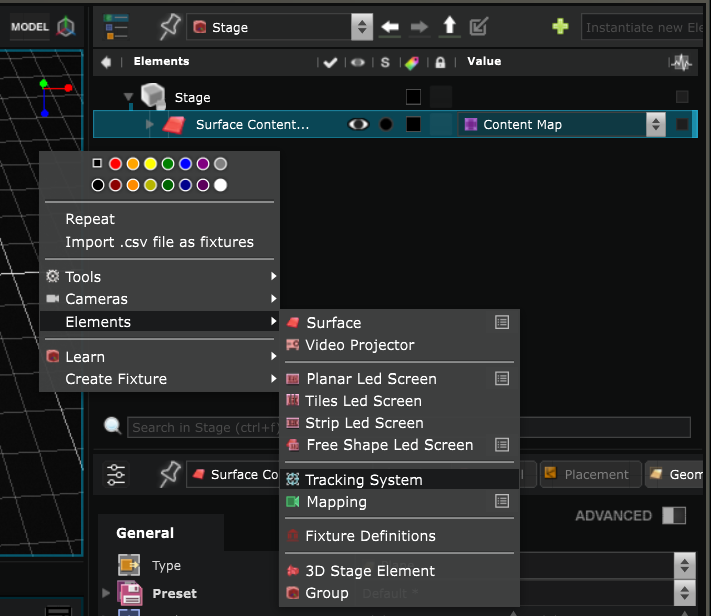
Go to Configure Video Outputs. In Control Device, add one. Create New and you should have an Augmenta control device.
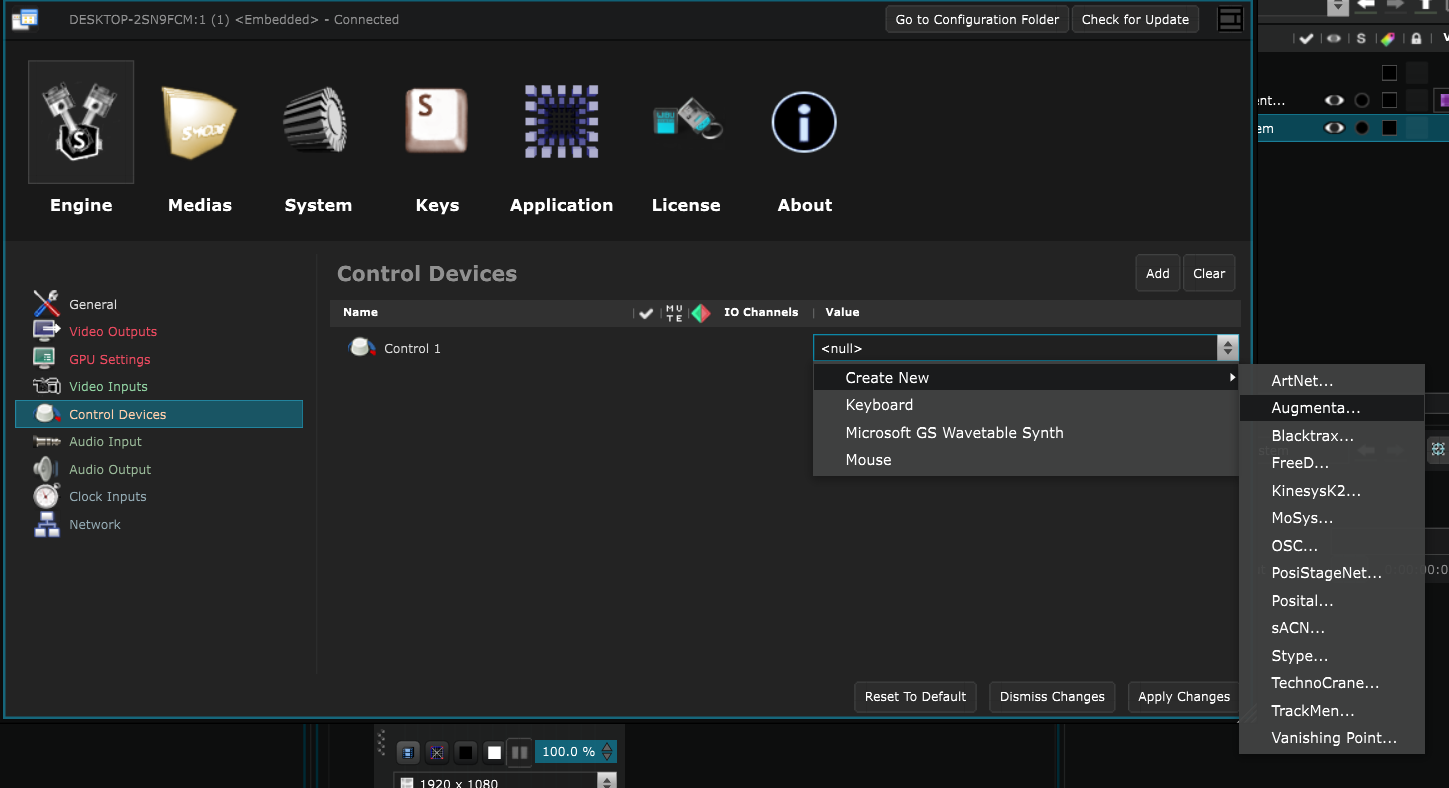
An Augmenta Control Device should appear. You can check if your correctly receiving data.
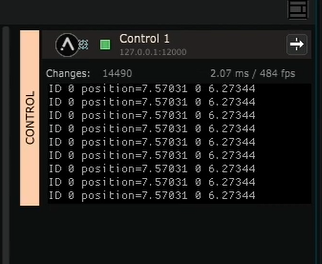
Now you need to link it to your tracking system add in SMODE. For this, click-on the tracking system and in the parameters you can link it to the control device.
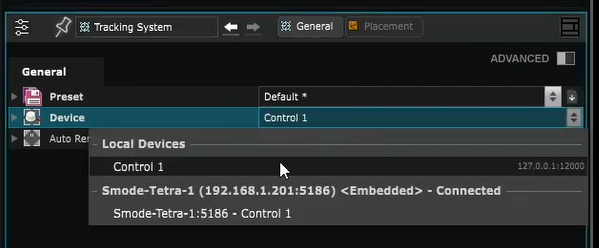
To offset the tracking system and match it with the Augmenta Fusion scene, set anchor floor to 0%.

Now to create some content. Go to Show Elements and add a composition. Right-click > 2D Layers > Compo.
In your compo, Add an object tracking system.
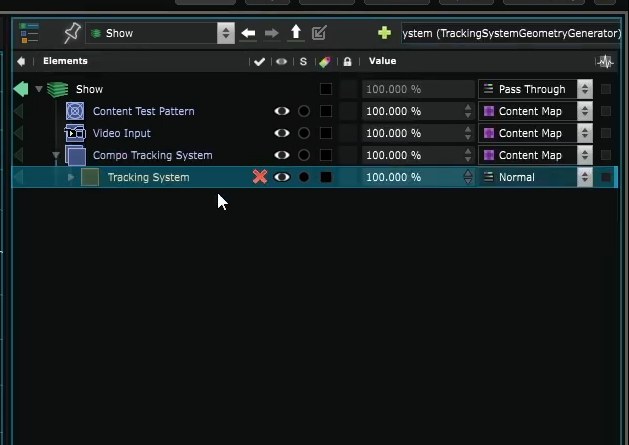
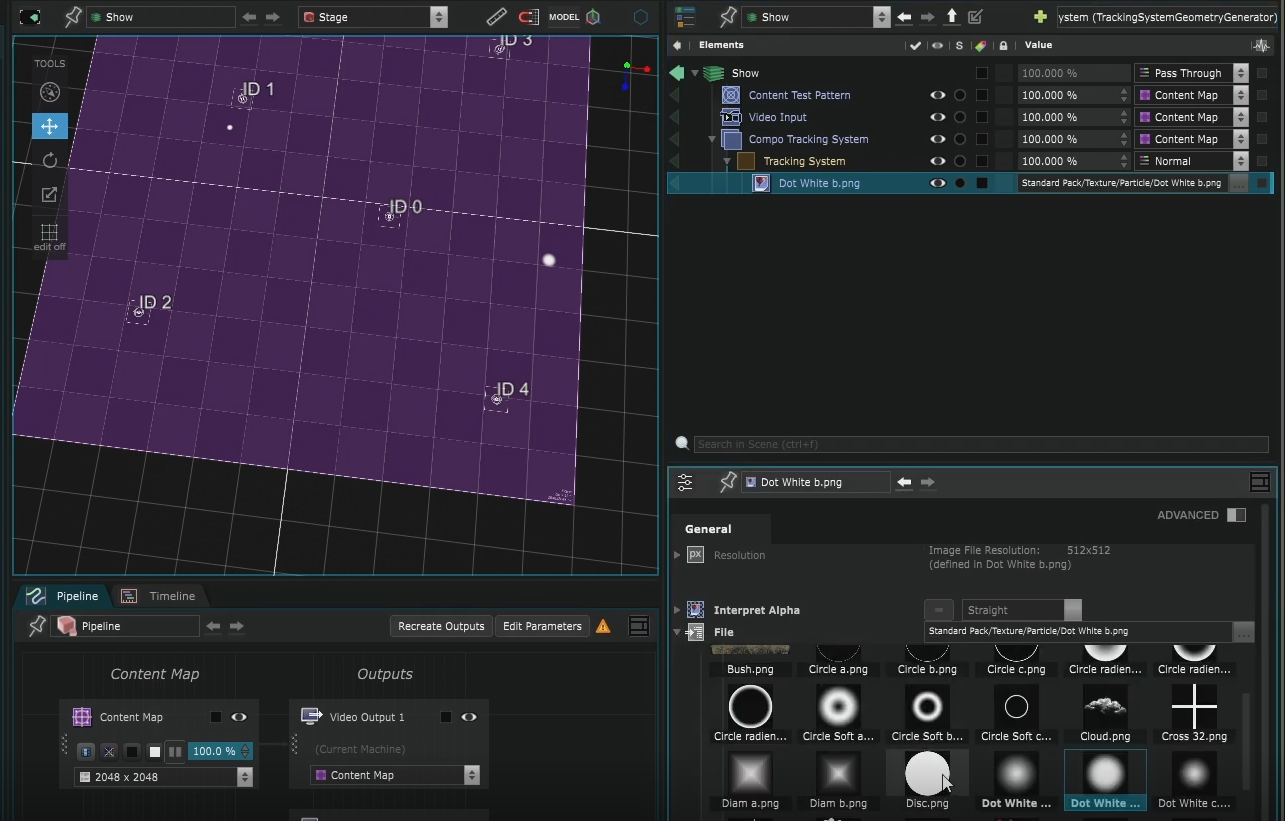
In stage, create a camera. Right-click > Cameras > Camera > Orthographic Top.
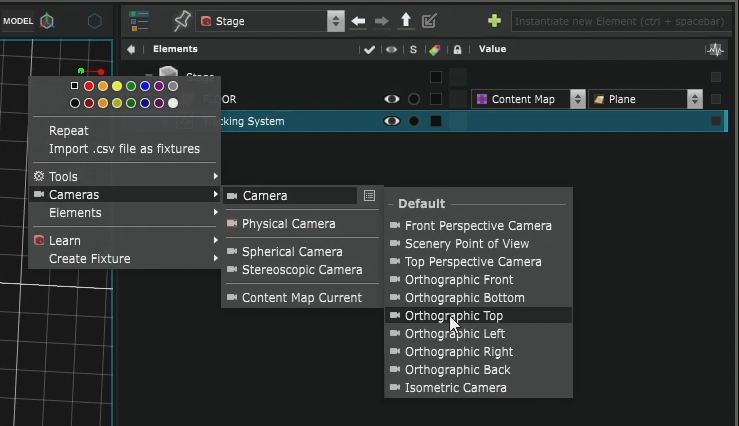
Set the camera size to your scene size.

In show, set the compo to use the orthographic camera.
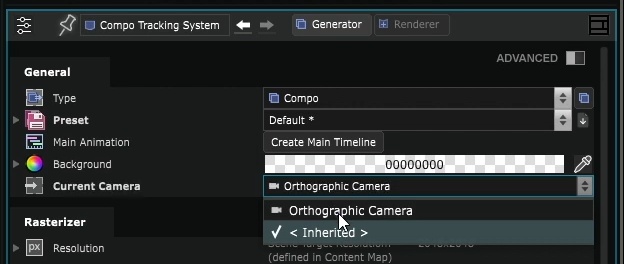
The points are aligned with the tracking system, which is aligned with the position of the tracker in the spout stream sent by Fusion.
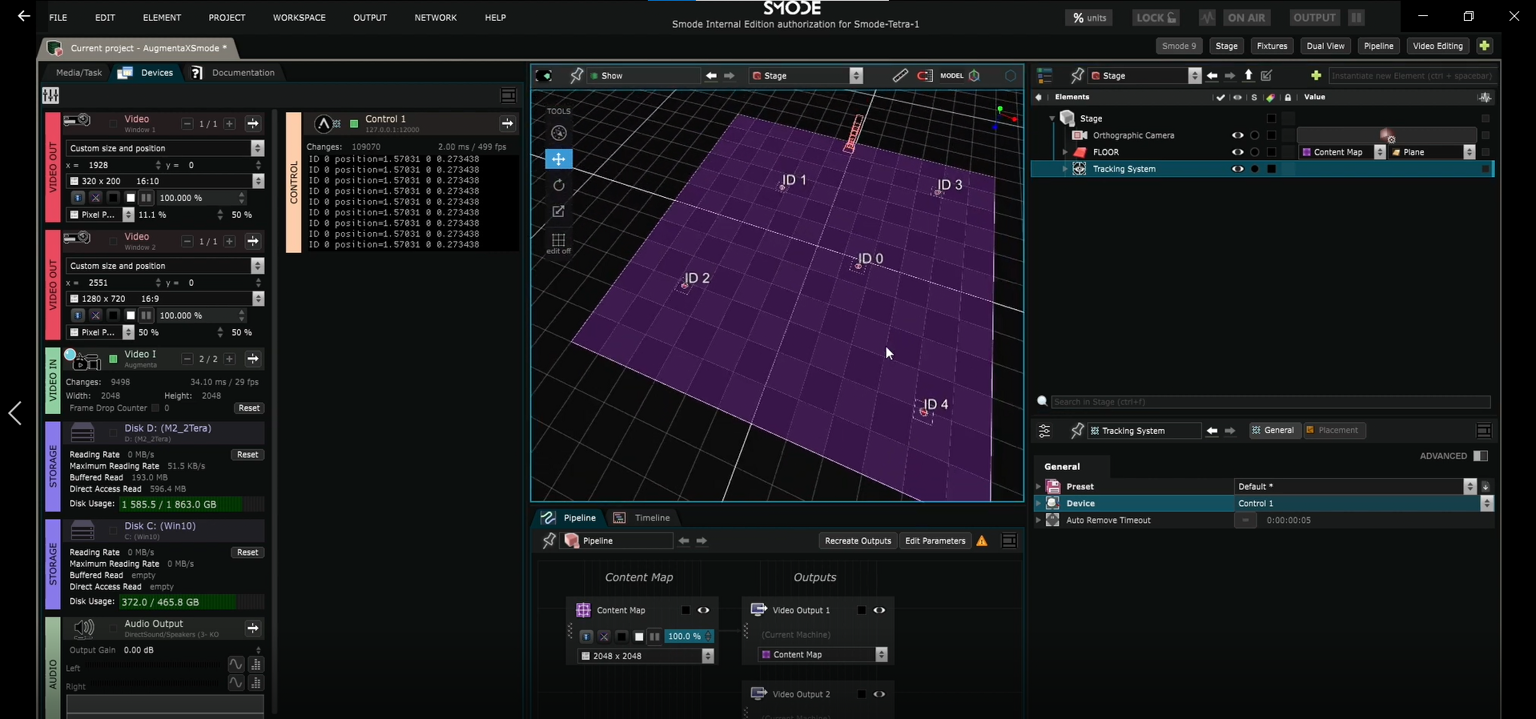
You can now create interactive content with Augmenta in SMODE !
Take a look at the second tutorial video, which shows an example of content creation in SMODE.
